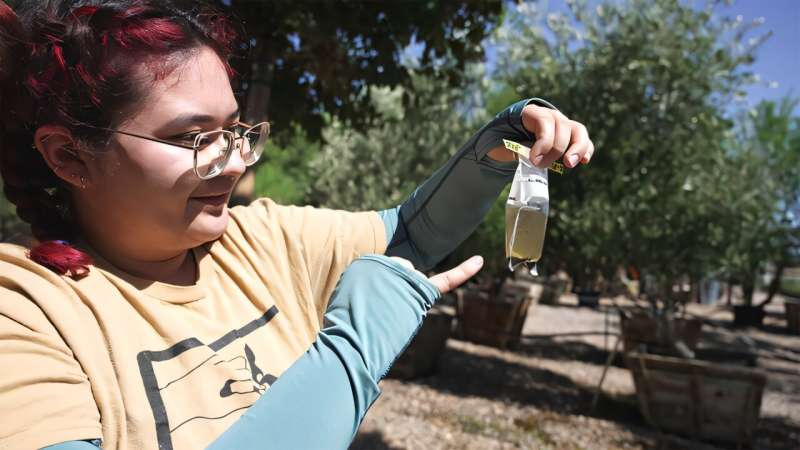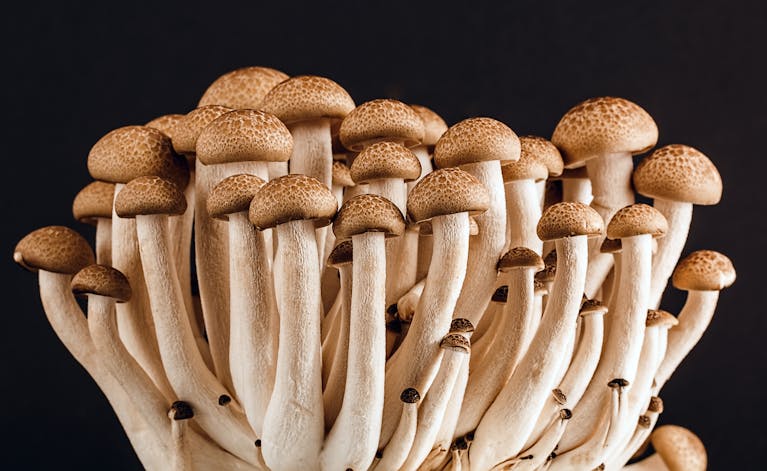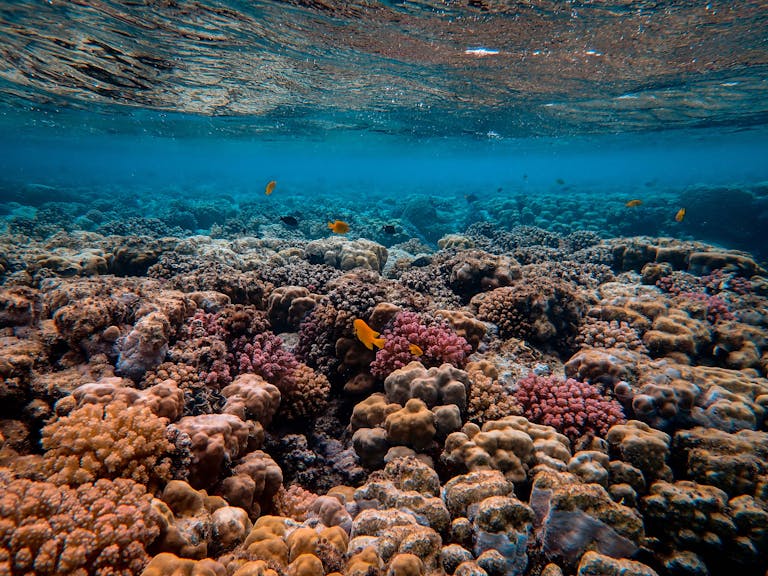Using Field and Lab Research to Pinpoint Mosquito Hot Spots in Arizona

Mosquitoes are more than just summer irritants — they’re carriers of dangerous diseases such as West Nile virus, and their populations in the United States are climbing despite ongoing citywide control programs. A team led by Assistant Professor Kelsey Lyberger at Arizona State University (ASU) is working to understand where, when, and why these insects thrive, especially in hot urban environments like Phoenix.
This new research, conducted by the Lyberger Lab within ASU’s College of Integrative Sciences and Arts, focuses on one of the most common mosquito species in the U.S., Culex, known for transmitting West Nile virus. The team’s goal is to map mosquito “hot spots” and help Maricopa County Vector Control target their population more effectively. Their findings were recently published in Global Change Biology.
Understanding Mosquito Behavior in a Desert City
Phoenix is known for its extreme summer heat, where daytime temperatures can soar well above 40°C (104°F). The question driving this research was simple but fascinating: How do mosquitoes manage to survive in such harsh conditions?
Lyberger’s team, which includes several undergraduate students, spent the early summer logging environmental data across 24 microhabitats in Phoenix. These locations included well-watered plant nurseries, shaded parks, and murky storm drains — places that might provide pockets of cooler, more humid air where mosquitoes could breed and rest.
At each site, the researchers collected mosquito larvae, raised them to adulthood in the lab, and identified the species. They also measured each mosquito’s critical thermal maximum — the highest temperature it could tolerate before dying. This data was then compared to temperatures recorded at city weather stations, such as those located at Phoenix Sky Harbor Airport.
Surprisingly, they discovered that local microhabitats were consistently cooler than the city’s official weather data suggested. These subtle differences — often just a few degrees — can make a world of difference to mosquito survival. In other words, while city-wide data might show an environment too hot for mosquitoes, the insects are actually finding cooler safe zones right under our noses.
Living on the Edge of Their Limits
Even with these cooler microhabitats, mosquitoes in Phoenix are living close to their thermal limits. The larvae that survive are pushing their physiological boundaries. According to Lyberger’s findings, these populations could be adapting in two ways:
- Acclimation – where mosquitoes adjust their biology in response to high temperatures over short periods.
- Evolutionary adaptation – where successive generations become genetically more resistant to heat.
These adaptations allow mosquitoes to persist even as summers get hotter and weather patterns become more unpredictable. The team’s earlier work on dengue fever also showed that temperature plays a major role in disease transmission, suggesting similar trends could affect West Nile virus spread.
Modeling the Future of Mosquito Seasons
The Lyberger Lab isn’t stopping at observation. They’re using their new temperature data and species analysis to build mathematical models predicting mosquito seasonality — when and where populations will surge throughout the year.
This modeling will help Maricopa County public health agencies know exactly when and where to intervene, allowing them to use fogging and other control measures more strategically instead of applying them uniformly across the city.
The research also taps into Maricopa County Vector Control’s existing datasets on mosquito abundance. By merging those records with the team’s precise field data, Lyberger’s group can evaluate how effective current mosquito-control treatments have been — and suggest data-driven improvements.
Training the Next Generation of Scientists
This project doubles as an invaluable hands-on learning opportunity for ASU students. Undergraduate researchers like Chloe Martz, a fourth-year student studying natural resource ecology, have gained skills in fieldwork, data organization, coding, and statistical modeling.
By collecting larvae, raising adult mosquitoes, analyzing temperature readings, and comparing data from different sources, students get to experience every step of scientific investigation — from muddy fieldwork to clean data visualization in the lab.
Many participants plan to continue their studies in entomology, environmental science, epidemiology, or data science, showing how real-world research can prepare them for a range of careers.
What’s Next for the Lyberger Lab
While the current study focuses on Culex mosquitoes and West Nile virus, Lyberger’s future work will look at mosquito range shifts across the United States. Her team plans to map mosquito invasion fronts, particularly for species that spread dengue fever, which may become a local concern as the climate warms.
The lab also aims to study short-term and long-term weather disturbances such as heat waves, monsoons, and hurricanes to better understand how these events influence mosquito survival and disease outbreaks.
By combining ecology, climate science, and public health, the lab’s interdisciplinary approach could become a model for how universities collaborate with local agencies to manage vector-borne diseases.
The Bigger Picture: Why Mosquito Research Matters
Mosquitoes are the deadliest animals on Earth. According to the World Health Organization, they’re responsible for more than 700,000 deaths annually, primarily from diseases like malaria, dengue, Zika, and West Nile virus.
In the U.S., West Nile virus is the leading mosquito-borne illness. It’s maintained in nature through a cycle between birds and mosquitoes, and humans become infected when bitten by mosquitoes that previously fed on infected birds. While most people don’t show symptoms, severe cases can lead to neurological complications or even death.
Understanding how mosquitoes adapt to urban and desert environments is crucial for predicting outbreaks before they happen. With climate change intensifying heat waves and rainfall patterns, these insects are expanding into regions that were previously inhospitable. Studies like Lyberger’s highlight how local microclimates can serve as unexpected breeding grounds — even in places as hot as Phoenix.
Microhabitats: The Hidden Refuge of Mosquitoes
A microhabitat is a small, localized environment within a larger area — for example, a shaded flower pot, a puddle in a park drain, or a patch of moist soil near irrigation lines. These spots can remain a few degrees cooler and more humid than surrounding air, giving mosquitoes an ideal refuge.
In urban landscapes, human activity often creates these microhabitats unintentionally. Overwatering gardens, clogged gutters, or decorative ponds can become perfect breeding sites. The ASU study shows that even in scorching cities, mosquitoes can survive and reproduce when microhabitats protect them from direct heat and evaporation.
This insight also challenges the assumption that hotter climates will automatically limit mosquito populations. Instead, mosquitoes may thrive because of human-created oases of moisture and shade.
A Note on Climate and Disease Spread
Global warming is reshaping where mosquitoes can live. Studies across continents show that several species, including Aedes aegypti and Culex quinquefasciatus, are expanding their range northward and to higher elevations.
Lyberger’s previous research found that while many studies note these shifts, only a small fraction actually prove climate change as the cause. That means ongoing data collection — like her team’s microhabitat monitoring — is essential for clarifying how much of this movement is due to climate, and how much is linked to urbanization or human travel.
As Arizona continues to experience warmer winters and more intense monsoon seasons, local mosquito ecology will likely keep evolving. Targeted surveillance and public awareness will be key to staying ahead.
Reference
Research Paper: A Scoping Review of Mosquito Vector Range Shifts: Widespread Expansions and Evidence Gaps in Climate Attribution – Global Change Biology (2025)





